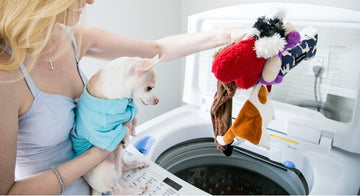One of the hardest debates every pet owner gets stuck on is choosing between a dog harness and a collar. Both have their advantages and disadvantages, and the right choice often depends on your dog’s size, behavior, and specific needs. Understanding the dog harness vs collar pros and cons is essential to ensure your furry friend’s safety during walks and training sessions.
Here’s what you need to know about dog collars and harnesses so you can choose which one is right for your dog:
What’s a Dog Collar and When Should I Use It?
Dog collars are the traditional choice for many pet owners. They are simple, easy to use, and come in various styles and materials. Collars are ideal for holding identification tags, which are super helpful if your dog ever gets lost. They are also convenient for quick leash attachments during short walks or trips to the vet.
However, collars can pose risks, especially for dogs that pull on the leash. The leash pressure on the neck can cause serious chronic injuries, particularly in small breeds or dogs with respiratory issues. It’s crucial to ensure you have a snugly fitted collar to prevent it from slipping off or causing discomfort.
Checking out Dog Harnesses
Harnesses have gained popularity due to their ability to evenly distribute pressure across the dog’s torso and back, reducing strain on the neck. They provide better control, especially for larger or more energetic dogs, and are beneficial for training purposes.
One notable product is the Reflective Pet Adjustable Vest, which enhances visibility during nighttime walks and offers a secure fit. Harnesses like this are particularly useful for dogs that tend to pull, as they discourage the behavior without causing harm.
Despite their benefits, harnesses can be more challenging to put on and may require adjustments to ensure a snug fit. Some dogs may also need time to get accustomed to wearing a harness, especially if they’ve only used collars before.
Comparing the Pros and Cons
When evaluating the dog harness vs collar pros and cons, consider the following:
- Control- Harnesses offer superior control, making them ideal for training and managing strong or reactive dogs. Collars provide less control and can be problematic if your dog tends to pull.
- Safety- Harnesses prevent neck injuries, especially in small breeds or dogs with respiratory issues. Collars can cause strain and potential harm if not used correctly.
- Comfort- Many dogs find harnesses more comfortable, as they don’t put pressure on the neck. However, some may prefer the minimalistic feel of a collar.
- Convenience- Collars are easier to put on and take off, making them suitable for quick outings. Harnesses require more effort but offer added benefits in terms of control and safety.
Making the Right Choice
Ultimately, the choice between a dog collar and a harness depends on your pet’s specific needs and behavior. For dogs that are well-trained and don’t pull, a collar may suffice. However, if your dog is prone to pulling, has health concerns, or you’re in the process of training, a harness is likely the better option.
It’s also worth noting that some pet owners use both a collar for holding ID tags and a harness for walks. This combination ensures your dog is always identifiable while benefiting from the control and safety a harness provides.
Explore More with AthletiPaw
Understanding the dog harness vs collar pros and cons is crucial for making a smart decision that prioritizes your dog’s well-being. While collars offer convenience, harnesses provide enhanced control and safety, especially for dogs that pull or have health issues. Assess your dog’s behavior, health, and comfort to determine the best option.
At AthletiPaw, we offer a range of products designed to enhance your dog’s comfort and safety. From the Reflective Pet Adjustable Vest to our other innovative solutions, our collection caters to various needs. Check out what we have in store for your furry friend.




